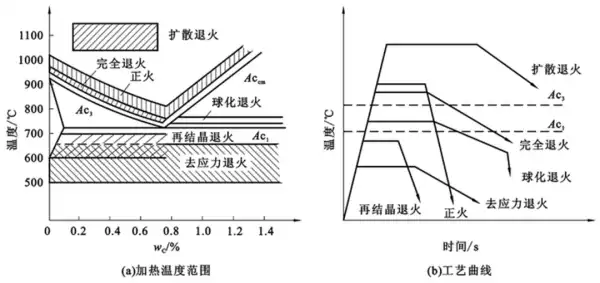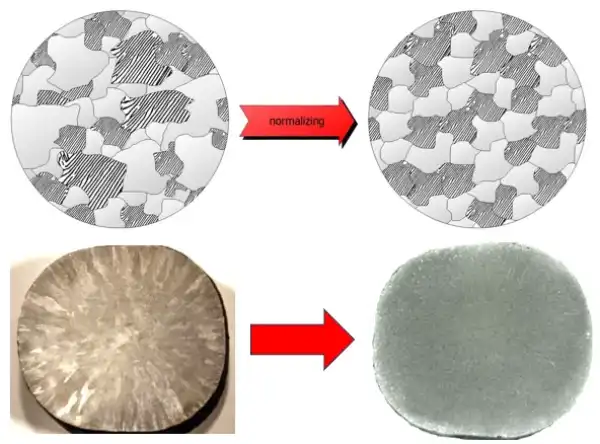What is the difference between normalizing and annealing? Today we will use an interesting way to understand it. I believe that this is the first time you learn knowledge in this way, and you will not be confused the next time you see it.
The commonly used heat treatment methods all need the word "fire". Fire means that heating is required, and the word before fire represents the purpose to be achieved. From the perspective of Chinese word structure, annealing should be called "fire retreat" and normalizing is called "fire normalization".
Let's first look at normalizing and annealing, which is fire retreat, which means that the material is "regressed" or "regressed" to a certain state by heating. The corresponding word in English is annealing, which means "heating and reorganization". To which state? That depends on how high the temperature you give. If you give it high, I will anneal thoroughly, if you give it low, I will just do it for taste. Therefore, there are many types of annealing. The temperatures from low to high are: stress relief annealing, recrystallization annealing, spheroidizing annealing, complete annealing, and diffusion annealing (homogenization annealing).
Let's take a person as an example, maybe we can feel the same. Imagine the material to be heat treated as a person who has been ravaged and exhausted physically and mentally. Then stress relief annealing is like stretching when you are tired, feeling more comfortable, but the cells of your body are still tired. Recrystallization annealing is like you have a good sleep, and your body cells are finally stretched. Spheroidizing annealing is to make adjustments to open up the various veins and nodules (layered network carbides) in the body and knead them. Complete normalizing and annealing requires recuperation, finding a place with a good environment to relax your mind, abandon all pressure, and return to yourself. However people may have some primary diseases (composition segregation and tissue heterogeneity), and it is difficult to eliminate them by recuperation, so diffusion annealing is needed to eliminate the pathology.

But no matter what kind of normalizing and annealing, the cooling speed will not be very fast. The purpose is to eliminate tension and relax the body and mind so that you can take on the next work with a brand new body and mind (it's not easy to be a cow or a horse, haha...). Back to our materials, it softens the metal, makes it more suitable for cold processing and forming, and enhances the ductility and toughness of the metal.
Let's look at normalizing. It can also be called "fire normalization" here. The word "normal" can be understood as two meanings, one is "normal" and the other is "perfect" (for example, when you describe a person as "normal"). Fire normalization is to heat the metal material to make it normalized and perfect. The corresponding word in English is normalizing, which means normalization.
Since it is to be normalized, it means that the material is a bit "abnormal and imperfect" before this. Of course, this is nonsense. What heat treatment is needed for perfection? So where are these imperfections and abnormalities reflected? It is better to take people as examples. You can think of body deformation, inconsistent facial features, large pores, unkempt hair, diseases, etc. The same is true for materials, coarse grains, inconsistent proportions, uneven composition and organization, various defects such as Widmanstätten structures, banded structures and network carbides, and large internal stress. Normalizing is to improve these conditions. Here is a picture. Do you think it looks better after normalizing and annealing?

Some students may say: This looks the same as the material before normalizing and annealing. The effect of heat treatment seems to be similar to annealing. The difference is quite big. In terms of heat treatment, normalizing does not give you time to grow fat like annealing. It needs to control the body shape. In terms of the ultimate goal, annealing makes you softer and easier to handle to adapt to the next transformation. Normalizing makes you better without reducing your ability to adapt to the next greater challenge.











